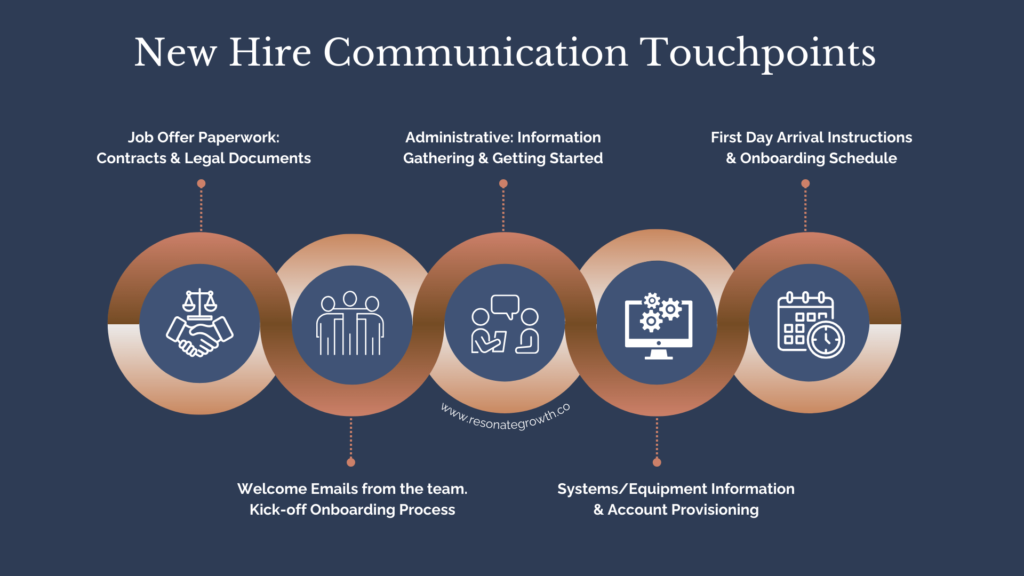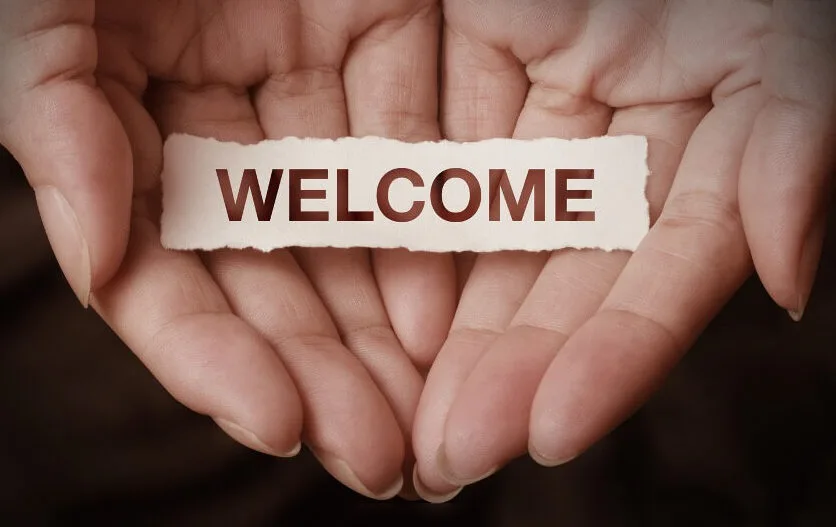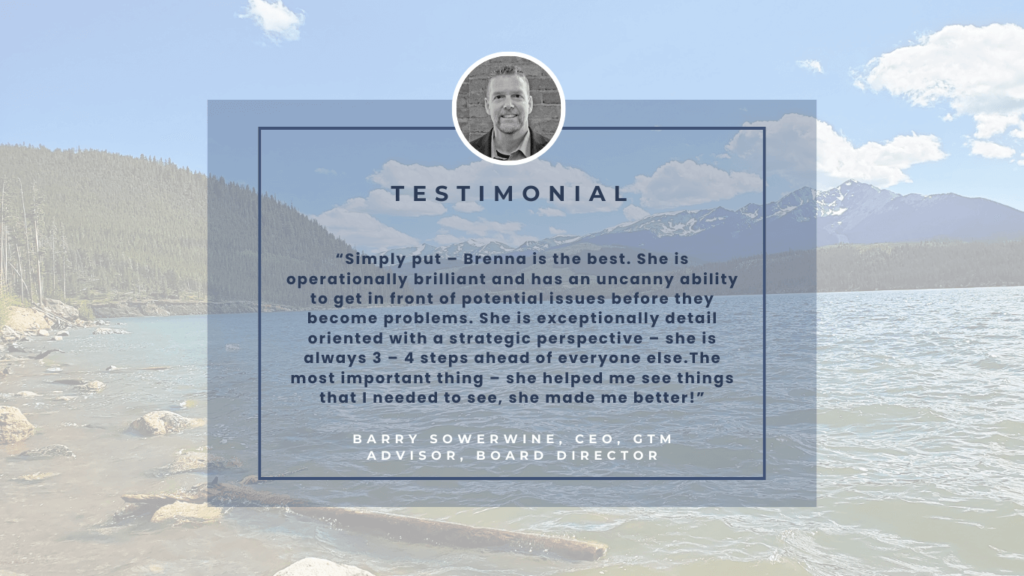
Series: What Early Stage Founders Need to Know About Hiring
In part three of this series on hiring, we explored the significance of good employee onboarding workflows. We examined some of the components of an organized workflow, how it can benefit both employers and new hires, and where to get help building one.
This post dives into some best practices for creating that workflow.
You will learn a simple approach to building an internal process that delivers an exceptional onboarding experience for new employees. And, to save you time, I’ve put together a simple employee onboarding checklist you can download for free.
This solution is well-suited to small businesses lacking a robust HRIS, while also laying the groundwork for a smooth transition to a more advanced HR platform in the future.
My onboarding journey through the Valley was like a box of chocolates; never knowing what I would get. From the unwritten rules of the ping-pong table hierarchy to navigating a maze of acronyms and slang that sounded like secret a code. Though it was a refreshing change from the “corporate” world, the quirky culture wasn’t without its awkward moments.
Like the first time you hear “I’m going to open my kimono” in a meeting…

In some instances, I was simply shown my desk and asked to solve world hunger. An approach that screamed operational inefficiency and a lack of leadership. On the other hand, I also experienced elaborate 30-day onboarding programs complete with milestones and buddy systems. Though well planned and effective, certainly more than an early stage startup requires.
By comparison, the optimal solution lies somewhere in the middle.
What was clear is that companies with a solid employee onboarding workflow (Databricks & Segment come to mind) also tended to be successful companies. Those who left new hires to “figure it out” generally suffered from toxic cultures and higher turnover rates.
I’m not saying there’s a direct correlation, but if you neglect new hires, you’re likely neglecting other areas as well.
“Treat employees like they make a difference, and they will.”
~ Jim Goodnight
Onboarding is akin to arranging a first date. You aim to make a positive impression, but it doesn’t have to be extravagant. After all, you’re a scrappy startup, not Google, and that’s likely why they joined in the first place. It’s not about the glamour; it’s about being organized, informative, and welcoming.
Below, I discuss the structure of a thoughtful employee onboarding workflow and the approach you should take. All of these components should find their way onto your employee onboarding checklist. Each company and founder will have their own unique perspective, but certain aspects should remain consistent.
Let’s open the kimono…
First and foremost, it’s crucial to ensure your New Hire packet and employee onboarding workflow complies with regulations. Specifically, federal requirements which are continually growing, but less nuanced than those at the state and local level, which vary based on location.
For instance, the paperwork and notification requirements for your New Hire packet will vary by state with California requiring significantly more documentation and reporting than say Texas or Kentucky.
Additionally, there may be specific documentation or training required for roles in highly regulated industries. Therefore, to remain compliant, ensure you’ve thoroughly researched and addressed all applicable compliance standards in the jurisdictions where your company operates. You must comply with regulations at both locations.
In part’s one and two of this series, I discussed the varying requirements between states and the importance of being informed about them.
Your New Hire packet should contain all internal company paperwork, both signed documents and informational materials. For instance, this may include employee agreements, NDA’s, and acknowledgements. In addition, you will need to include any enrollment forms or instructions related to benefits and perks.
Best practice is to maintain a detailed list of all required paperwork and information on your employee onboarding checklist, with corresponding links for each item. This way, you can easily reference and access the necessary documents and resources. Moreover, maintaining a detailed onboarding workflow will ensure consistency and avoid oversights.
This is a high level overview of some of the document categories your New Hire packet should contain.
If you’re thinking about putting together a New Hire Packet on your own, there are numerous online resources available to guide you. E-Verify, U.S. Department of Labor, and OSHA are a few places to start.
If you’re a member of SHRM (The Society for Human Resource Management), you’ll find a plethora of resources there. The Labor Law Center is an excellent resource for poster requirements.
However, if the thought of researching government requirements and building onboarding workflows makes you want to pull your hair out, don’t fret! You might want to consider hiring an external consultant, like Resonate Growth, who can cut through the red tape for you while you focus on product development and market fit. Ultimately, leveraging the support of an experienced consultant may be the most efficient way to get your onboarding workflow implemented quickly.
Once your candidate has signed the offer letter, send them copies of all signed documents. I know, nothing says “welcome” like a stack of legal paperwork, but hey, some things just have to be done!
Then you can wheel out the welcome wagon.
Send a brief email congratulating them and encourage other employees to do the same. Alternatively, you could whip up an e-card and have everyone scribble their own message.
Like a virtual group hug but without the awkward sweaty embraces!

Follow up with a detailed Welcome email:
Since new hires don’t typically have advanced access to company email, it’s helpful to send an onboarding schedule in advance. First, send it to their personal email, and cc their work email. This provides them with an idea of what to expect and how to prepare. Additionally, for security purposes, it’s wise to postpone system access until their start date or at least 24 hours prior.
That said, people in leadership or senior roles often request early access to review processes, previous sprints, or schedule meetings. However, the best practice is to ensure all the proper NDAs and disclosures are signed and on file prior to providing advanced access.

All this might seem excessive; after all, if it’s not likely their first rodeo. However, this is what white-glove means. Try to predict potential questions and provide answers and guidance in advance. No one likes playing detective before they’ve even begun.
Provide a schedule for their first two weeks – it doesn’t need to be down to the minute, but have a plan.
Avoid overwhelming newcomers with back-to-back meetings to ensure they can retain information effectively. Instead, maintain open space on the calendar for online training, self-onboarding, system access, and profile setup. Additionally, the unstructured time enables them to review materials, ask questions, and fully absorb the information needed to get up to speed.
Provide opportunities for new employees to engage with the existing team. Schedule 30-minute one-on-one meetings for them with key stakeholders during their first two weeks. After all, your new hire will be drinking from the fire hose in the beginning. Setting up these meetings will help ensure their success.
Encourage attendance at beneficial meetings, even if they’re not essential. Early stage startups often have more cross-departmental collaboration, so new hires can benefit from joining “sync” meetings outside of their primary role. This exposure provides broader understanding and additional chances to connect with colleagues.
Make sure ALL their systems are provisioned before their start date. You want them to hit the ground running and avoid delays. Be organized.
If the person responsible for provisioning access is unavailable for some reason, unnecessary delays can occur. Furthermore, we all know sometimes you need access to one system before accessing another – it’s an annoying game of digital dominoes.
However, by implementing efficient access control procedures, you can minimize these bottlenecks and ensure a smoother onboarding experience.
Good ol’ company swag is like a rite of passage. After all, what kind of startup are you running without standard issue swag?
Also, consider a welcome gift, either sent to their home, placed at their desk, or both! Who wouldn’t be thrilled to find a six-pack of top-notch microbrew, flowers, or some fresh cookies waiting at their doorstep or desk?
P.S. Sending it to their home means less to carry back at the end of their first day.
A well-organized employee onboarding workflow is the golden ticket to kick off your new hire’s journey! Start off with a legally sound New Hire packet, crystal clear communication, and a well-structured onboarding schedule. Then wrap it up in a neat little bow.
Imagine the onboarding process as an elegant dinner party. You wouldn’t just throw your guests a bag of chips and say “help yourself”, would you? No! They can eat chips at home. You’d roll out the red carpet, serve them hors d’oeuvres, a tasty cocktail, and make sure they know where the restroom is.
Similarly, that’s what we’re aiming for here – an A-list, white-glove experience that sets the stage for your new hire to feel welcome, fully informed, and ready to make their mark.
When you put people first and invest time and resources into creating an welcoming experience – believe me, it shines through like a beacon!

The “New Employee Onboarding Checklist” is simple to follow and easy to edit for your specific needs. Click below to download in .xlsx format, perfect for Google Sheets or Microsoft Excel. If you use work management tools like Asana, Notion, or Monday.com, you can easily import this document into your tool of choice and customize it to your heart’s content!
If you’re looking for a more comprehensive tutorial, check out this post. I provide more specifics on the required forms, suggested timelines, and scheduling details. This tutorial will help you build a white-glove employee onboarding workflow, perfect for small businesses.
Additionally, you will find free, customizable onboarding templates that will save you time and impress new hires.
BUT, if you’re thinking, “Cool story, but we’re a tiny startup with five people, I barely have time to add water to my instant noodles.” Forget about reading the next post – let’s hop on a call instead.
Resonate Growth offers a range of well-developed and simple workflows that can be customized to suit your organizational requirements.
They’ll allow you to implement a simple internal system quickly, without a lengthy implementation process. Thus ensuring a seamless experience for new hires until you’re ready to purchase a more robust HRIS system.
You can visit our Shop and review all the instant download options we offer. However, if you prefer a more personalized solution, book a Discovery Call and let’s connect live!
Straightforward step-by-step instructions built in Google Sheets or MSFT Excel to ensure simplicity and easy integration with your future HRIS tool.
While the majority of my workflows and compliance paperwork are designed with US legal requirements in mind, the underlying internal processes can still benefit small business owners in any country.


Brenna is a former Silicon Valley operations leader turned startup whisperer, using her own battle scars and tales of victory to guide others through the land of unicorns and disruptors.